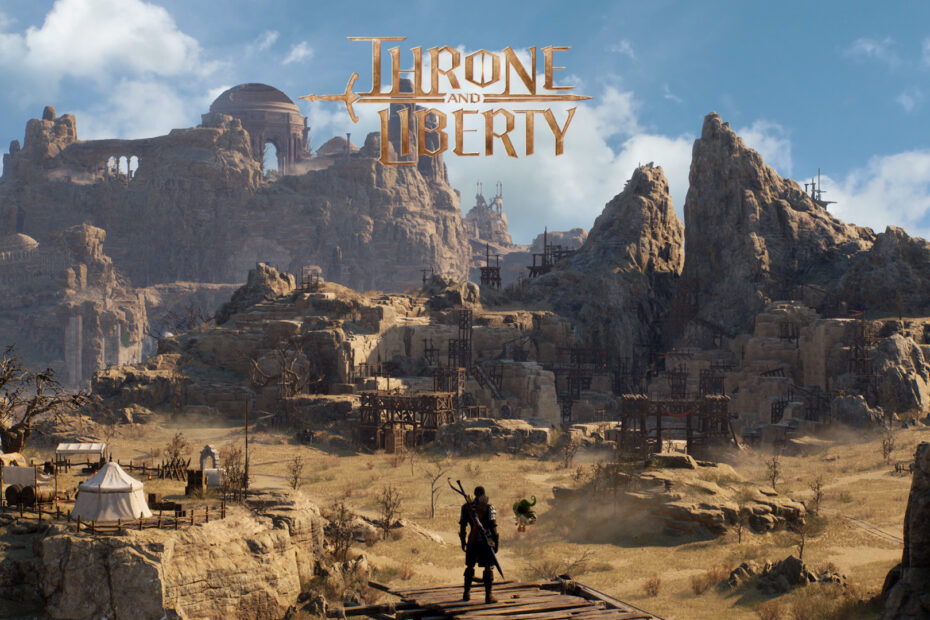In the expansive universe of fantasy RPGs, Throne and Liberty emerges as a NextGen experience, captivating players on PC, Android, and iOS. As you embark on this fantastical journey, you are greeted by the lush lands of Tiia, promising a blend of relaxation and excitement. The game boasts high-quality 3D models, stunning visuals, and a diverse collection of Heroes, each with unique attributes. The allure of 360° real-time operational battlefields awaits, demanding strategic mastery and impeccable timing in short, exhilarating encounters lasting 2 to 3 minutes.
Throne and Liberty commit to a time-saving and user-friendly hero development system, offering players many powerful Heroes in the early stages, free of charge. The festive season introduces a Christmas event, allowing players to obtain a new legendary hero and skin through daily logins. Additionally, a competitive event between two camps, influenced by prominent gamers, offers players the chance to reap rewards by choosing a side and participating. To join the adventure, players can download Throne and Liberty using the provided QR code or the link in the description.
Now, let’s delve into the intricate world of currencies within Throne and Liberty. Lucent and Solent take center stage as the primary currencies shaping the economic landscape of the game. Lucent, purchasable with real money, plays a pivotal role in the Auction House, referred to as the Marketplace. Here, players can acquire base-level gear and essential recipes for crafting specific sets. The gear materials available for purchase in the Marketplace are only part of the equation, as farming in-game becomes a necessity for obtaining the majority of required materials.
Solent, on the other hand, acts as a secondary currency required for upgrades and crafting. The intricate process involves transferring experience from one piece of gear to another, demanding a significant investment of 300,000 Solent. This bottleneck prevents players from swiftly advancing to full purple gear, highlighting a balance between pay-to-win and the importance of in-game efforts.
The cash shop introduces Crean, a currency used exclusively for the battle pass, growth pass, and costume packages. While these items offer advantages, they don’t directly impact gear progression. The pay-to-progress and pay-to-win aspects arise when purchasing Lucent and gear. Notably, the ability to buy gear doesn’t guarantee instant dominance, as the subsequent upgrading process involves farming untradeable growth stones and the use of Solent.
The death mechanic in Throne and Liberty introduces an intriguing twist. Upon dying, players accumulate a death penalty stack, reducing damage and movement speed by 10% for every 20 deaths. To alleviate this penalty, players can spend Solent. This system adds a layer of consequences to deaths and influences strategic decisions during battles.
Throne and Liberty Lucent, initially perceived as a premium currency, functions more like in-game gold. Tradable items, such as gear drops, can be sold for Lucent, providing players with a means to acquire the currency without direct investment. The game’s economic system encourages active guild participation, offering additional avenues to earn both Lucent and Solent. It’s 100% safe to buy TL Lucent and Items from mmoexp.com.
As the game progresses, the importance of traits becomes evident. The endgame loop likely revolves around min-maxing these traits, requiring an identical copy of an item to transfer traits effectively. This introduces a potential pay-to-win scenario, where players with the means to purchase specific traits on the Auction House gain a significant advantage in optimizing their gear.
Despite concerns about pay-to-win dynamics, the game’s current state suggests a balanced approach. Real-time rankings reveal the dominance of free-to-play players in both activity and kill rankings. Guilds led by free-to-play players hold the top positions, challenging preconceived notions about the necessity of heavy spending for success.
In conclusion, Throne and Liberty presents a nuanced landscape, where pay-to-win elements coexist with opportunities for free-to-play players to thrive. The game’s evolving dynamics and endgame challenges will ultimately determine the extent of its pay-to-win nature. As players continue to explore the realms of Tiia, the true impact of economic systems and progression mechanics will become clearer, shaping the legacy of Throne and Liberty.
